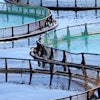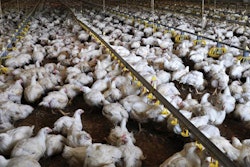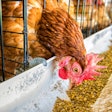
When poultry, pigs and other farm animals were raised on small farms and backyards, each animal had one feed throughout its life. At least the lucky ones did, because some were raised on food scraps, but this is a totally different story.
It took considerable convincing to introduce a second diet when such animals were confined into commercial rearing facilities away from traditional farms; habit remains strong long after its causative factor ceases to exist. However, the scale of economics evolved and ushered in the era of phase feeding. But still, books published as late as the 90s were describing only the minimum possible number of diets/phase per animal cycle.
There is no logic in ordering the same feed as last week if you can order a new, less dense — and presumably less expensive — feed for your animals.
In practice, however, modern animal producers use as many diets as logistics enable. There is no logic in ordering the same feed as last week if you can order a new, less dense — and presumably less expensive — feed for your animals. That usually takes an order of a full truck delivered to a single location to fill a number of silos that will feed enough animals present until the next order. Thus, only large farms operate on this mode. Most will order the prescribed number of diets, which is usually three for broilers, two or three for finishing pigs, and so on. That there are considerable advantages in terms of improved feed efficiency, less nutrient wastage and better profitability remains unquestionable when one discusses the merits of more diets or phases. But it is always logistics that is the final arbiter of the nutrition program, something they did not teach us at school!
What is blend feeding?
What if it was possible to have both worlds without their negative aspects? What if we only needed two diets from which we could create an unlimited number of other diets to match the need of our animals more precisely and reduce feed cost at the same time? This was answered by the concept of blend feeding, which is not new, just undervalued — again because tradition often remains a strong negative incentive for most of us even when something better comes up. This is what happened with this advance in feed management.
What if we only needed two diets from which we could create an unlimited number of other diets?
Science and practice have repeatedly demonstrated that it is entirely possible and feasible to design two diets with contrasting nutrient density: one low, one high. The high-end density diet would correspond to the first diet the animal would require, whereas the low-end diet would be the one it would consume at the very end of its commercial life. Then, all diets in-between would be created by mixing different proportions of the two extreme-end diets. It has been done and proven, but it is rarely used.
There is limited incentive to apply this feed management practice in poultry, at least in layers and broilers, because feed management in the former case is done by altering feed quantity, and in the latter case broilers do not stay that long on the farm. Although these arguments satisfy the case of layers, they nevertheless fail to convince when it comes to broilers. Even though broilers grow at light speeds these days, their nutrient needs change by the day — so in theory, at least, a different diet may be warranted each day.
There is absolutely no excuse not to adopt such a system of feed management in the case of pigs, especially growing-finishing ones, which often require 7 to 10 diets from weaning to finishing. There, tradition remains stronger, but farm size is also often not large enough to cover the initial investment required to establish blend feeding. This is where we must start counting the disadvantages of this system.
Blend feeding requires sophistication
Apart from a higher cost to install equipment required to draw feed from two silos, mix it at prescribed proportions and deliver it to the required pen of animals, there is a need of greater sophistication.
In essence, phase feeding is done by hand or a timer and a sensor, both relatively inexpensive, but highly prone to error. In contrast, blend feeding requires a computer to handle the mixing and delivery. As we are past the age when computers were the realm of the enlightened and/or the rich, it is no longer the machine itself that impedes the implementation of blend feeding in farms that could use it to their significant financial advantage.
The real problem is the person who must be entrusted with the task of deciding the design of the feed program: how many mixes, what proportions of feed A versus feed B, what feed allowances per pen and what feed A and B look like.
Read more: Pig study finds on-farm feed blending improves profitability
One would be excused to believe any Ph.D. nutritionist could do these things. Lamentably, blend feeding is not an area that has attracted much research, interest or even affection by universities, despite its obvious advantages for producers and the advances in computer technology. Clearly, where funds are not readily available for certain research, our modern society is forced to focus on other interesting aspects, but I digress again.
As it happens, blend feeding remains a reclusive privilege of few nutritionists that had the opportunity to try it first hand at commercial level. These few people will agree with me that it is not difficult to design a program that works — after all, we all know the basics of nutrition and can come up with a draft proposal. What takes time to master is how to design such a program to deliver what it promised in the first place, which is nothing less than increased profitability. And because most fail to take matters to such conclusion, blend feeding has failed to become mainstream.
The system, technology and knowledge are all out there for those brave enough to cross tradition. You have been warned!
















